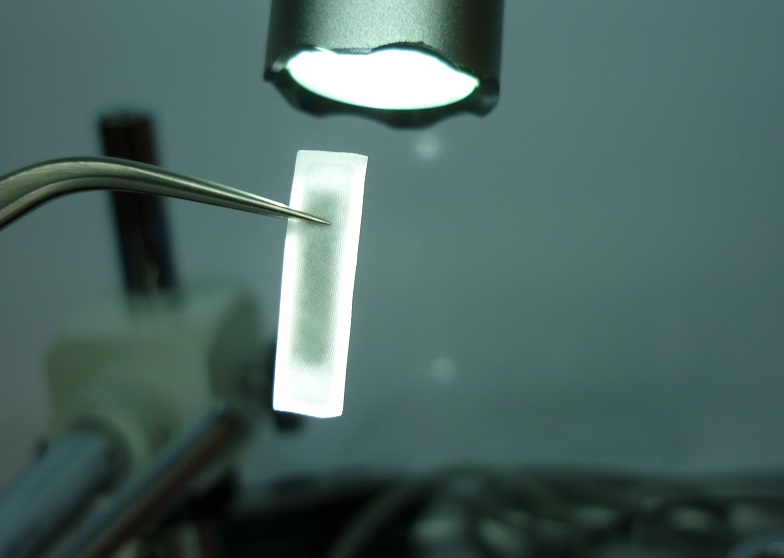
We've Seen It All
Data Retriever is a full-service lab that is small in size but big on experience.
The following slides are a sample of the variety of recoveries we’ve performed in the past. Rest assured if you’ve got a curly one for us, chances are we’ve seen something similar before!
(If you’re on a mobile device and the pictures don’t show, click on the slide headings to view them).
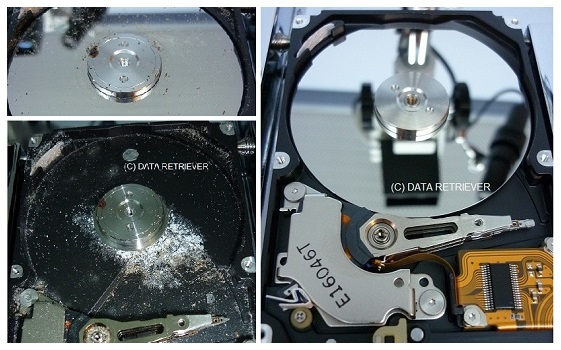
Failed Drive Lid Seal
We surmised the drive’s lid seal had failed after a decade of operation in a humid, tropical environment. Once the drive’s lid filter perished, things got rapidly worse inside the chassis, culminating in a mess of rubber and mold.
To the surprise of our customer who had seen the ‘Before’ photos prior to our work, this job was a 100% success, with every single file on the drive being completely recovered!

Successful Head Swap
This is a ‘before and after’ picture: observe the state of the original heads on the left versus the clean and ordered set on the right. Data recovery is only possible when the heads can read data from the platters.
This particular drive suffered from a sudden jolt whilst running, resulting in the significant damage to the tiny heads and arms, as pictured. With a new set of heads installed, this drive was fully recoverable.

Car versus Laptop
This drive suffered significant damage when its containing laptop was run over by its unfortunate owner! The platters were not damaged, more out of luck than anything else.
Amazingly, the original heads and control board were also intact! With a new drive chassis to house everything, this bent drive was recoverable.
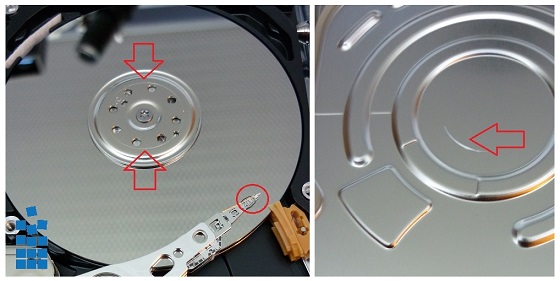
Non-Fatal Head Crash
Unlike the severely-damaged glass platter later in this gallery, the drive pictured here suffered from a head crash that resulted in ‘stiction’, where the drive heads became stuck to the drive platters and prevented the motor from spinning.
The motor did not have the required torque to move the platters whilst the heads were stuck to them. With gentle and precise correction in the lab, data recovery is often successful in cases like this with the original heads surviving at least partially intact and sufficiently functional for data recovery.

Damaged Heads After DIY Recovery
This was the unfortunate result of a well-meaning ‘technically-inclined’ friend who tried to fix a failed drive before its unfortunate owner decided to pursue professional recovery.
While older drives were often tolerant of investigative poking and prodding, the modern hard drive (post-2006 -> perpendicular recording) often will struggle to deal with the introduction of airborne particles after the lid is lifted, let alone moving fingers! This drive required cleaning and replacement components before recovery was possible.
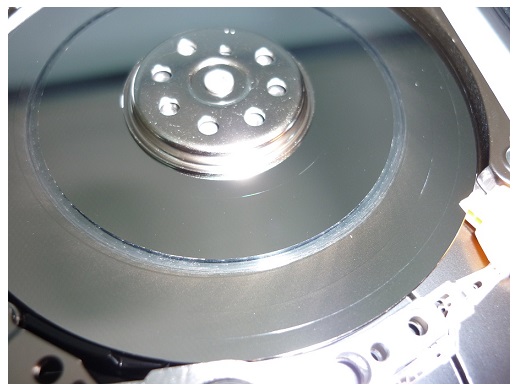
Glass Platters Damaged in Head Crash
This is the stuff of nightmares for drive owners without backups: the glass platter in this drive has suffered significant and continual contact with the heads for at least minutes (and possibly longer) as the drive continued to attempt to read after suffering a head crash. Look closely and you can see through this platter!
One notable difference between longitudinal and perpendicular recording is that the older drives typically had a lower areal density, meaning the heads were usually far more tolerant of serious physical trauma – as was the case with this older 80GB drive. With original heads, this particular drive was amazingly still readable in places. Ultimately, data recovery was not possible in this case as the small amounts of data that could be read were too isolated to form meaningful information.
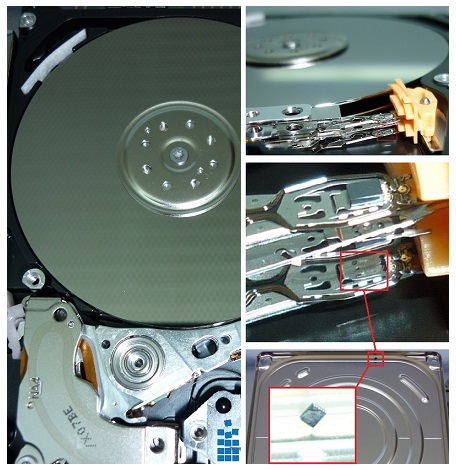
Laptop Drive with Missing Head
A little searching was required before the missing head was physically located in this drive’s interior. It detached after the drive sustained a sudden impact during operation; the loose head (or technically, the slider) ended up lodging against the rubber lid seal after flying away from the head assembly. Not good!
With a head swap, this drive was recoverable.
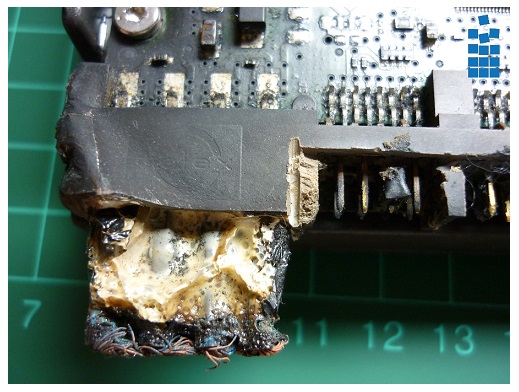
Radiant Heat Damage
This drive was in a computer that was in a building that endured a serious fire. The inside of the drive was not exposed directly to fire and the lid seal remained intact, so while plastic parts were a little melted, the internal area had miraculously remained clear of debris.
Recovery was not successful in this case, despite a few wins in the process: with a little online collaboration in the data recovery community, the drive was identified and a donor was sourced. Heads were swapped and control board replaced and reprogrammed.
The recovery was ultimately unsuccessful due to the platters having been invisibly affected by radiant heat; their delicate magnetic surfaces altered and the data they contained, lost.
